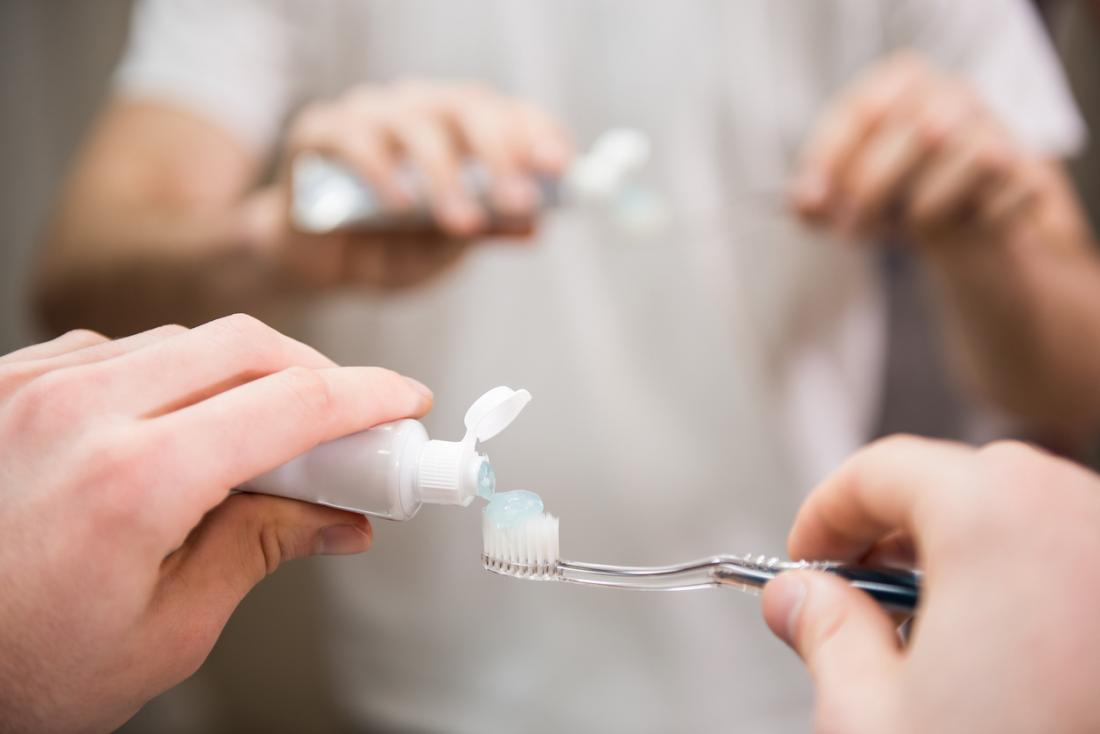
Yellow nail syndrome is a complex condition causing yellowing of the nails.
Yellow nail syndrome is considered to be very rare, with less than 400 cases published in medical literature. It is estimated to occur in fewer than 1 in every 1 million people.
The condition has been noted worldwide in both men and women and, though unusual, it can affect children and newborns.
Symptoms
Yellow nail syndrome is usually diagnosed after a thorough evaluation of a person’s symptoms. The telltale signs of this rare condition include:
- Nail changes: The fingernails or toenails may be yellow, thickened, and have a very strong curve. The nails often stop growing altogether and may separate from the nail bed and fall out.
- Pleural effusion: This is the buildup of fluid between the membranes that line the lungs and chest cavity. Pleural effusion often causes chest pain, cough, and shortness of breath.
- Chronic respiratory infections: These conditions can include sinus infections, cough, bronchitis, or pneumonia.
- Lymphedema in the arms and legs: Lymphedema is a buildup of lymph fluid, which usually moves throughout the body to help fight infection. If it becomes blocked, it can cause swelling, heaviness, tightness, and problems moving the affected limb. In yellow nail syndrome, the lymphedema usually affects one or both legs.
A diagnosis of yellow nail syndrome is typically made if the person has the telltale nail symptoms combined with lymphedema and a respiratory problem.
Causes and risk factors
The cause of yellow nail syndrome is not known, and experts say the condition is still not well understood.
In some cases, yellow nail syndrome may occur in two or more people in the same family. This points to a possible genetic link, although it has not been proven.
People with certain forms of cancer, immune system conditions, thyroid disease, and rheumatoid arthritis may have a higher risk of yellow nail syndrome. Some drugs used to treat rheumatoid arthritis may play a role in yellow nail syndrome, but this has not been proven.

One of the more unusual risk factors is swallowing toothpaste.
In the Orphanet Journal of Rare Diseases, a review of yellow nail syndrome states that “lymphatic impairment” or leakage is among the most probable causes of yellow nail syndrome.
This means there is a malfunction or abnormality in the lymphatic system, which transports lymph fluid and removes toxins and waste from the body. The cause of lymphatic impairment, however, is not clear.
Titanium exposure is another possible cause of yellow nail syndrome. Titanium can be found in many everyday items, including sunscreen, cosmetics, medicines, foods, dental fillings and implants, and joint implants.
One instance of yellow nail syndrome is documented in Respiratory Medicine Case Reports and involves a 56-year-old woman who had chronic sinus infection, cough, and yellow nails. The symptoms appeared within a year of the woman getting amalgam dental implants, which often contain titanium.
Testing showed that the woman had elevated levels of titanium in her nails. When the dental implants were removed, her sinus and cough problems resolved. In conclusion, the authors stated that yellow nail syndrome may be linked to titanium exposure. However, more research is needed.
Another study in Skin Appendage Disorders also examines the possible link between titanium exposure and yellow nail syndrome. The researchers found elevated titanium levels in nail samples from 30 people who had the disorder. Titanium was not found in the nails of healthy participants. Four of those taking part experienced a complete resolution of their yellow nail syndrome symptoms after their titanium dental implants were removed.
Finally, a study in the journal Pediatrics found that a 9-year-old girl who had a habit of swallowing toothpaste had symptoms of yellow nail syndrome and elevated levels of titanium in her nails. The toothpaste contained titanium dioxide. The symptoms of yellow nail syndrome resolved when the child was monitored and avoided swallowing toothpaste during teeth-brushing.
Many people are exposed to titanium and do not develop yellow nail syndrome, so this factor alone may not be fully responsible for the condition. However, people with yellow nail syndrome may wish to discuss their titanium exposure with their doctor.
Treatment
A variety of treatments are used for yellow nail syndrome, as no single one appears to work for everyone.
If an underlying condition is found, treating that issue may help clear up symptoms of yellow nail syndrome.
Treatments may vary widely, depending upon each person’s medical history and individual symptoms. Some treatment options include:
- Vitamin E combined with an antifungal drug, such as fluconazole: According to one Orphanet Journal review, vitamin E treatment appears to be the most effective for resolving nail-related symptoms.
- Antibiotics for respiratory infections: People who have chronic bronchitis, sinus infections, or cough may benefit from antibiotics.
- Surgery for pleural effusion: This may include draining of the excess fluid to relieve symptoms.
- Special bandages and elastic compression garments: These tools can be helpful in alleviating lymphedema in the legs. Exercises and a massage known as manual lymph drainage may also be beneficial.
Outlook
Sometimes, yellow nail syndrome goes away without treatment. With proper treatment, the symptoms may be managed or resolved.
Yellow nail syndrome does not appear to be life-threatening, though its symptoms can be bothersome and painful.
In some cases, removing titanium dental implants may resolve a person’s symptoms, although this method has not been proven to work in all cases.
It is best to speak with medical and dental professionals to determine if the implants may have caused yellow nail syndrome and whether alternative dental work can be done to replace them.
With the right treatment, many people with yellow nail syndrome can manage or eliminate most symptoms.
Let’s block ads! (Why?)





